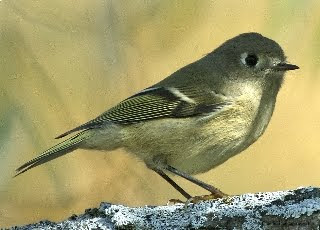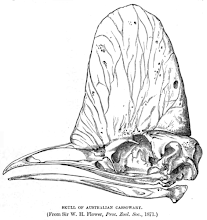ahh, summer 2011 hath commenced! my summer job doesn't start till the end of may, so i have had some time to get into some cool stuff, such as:
1. sleeping
2. lap swimming
3. building a spider terrarium
4. finding dead birds and harvesting their bones
 it was a little [okay, a lot] stormy this past week, and one morning [read: 1:00 pm], i went outside to check on my spider terrarium. on my way, i almost stepped on this little guy!
it was a little [okay, a lot] stormy this past week, and one morning [read: 1:00 pm], i went outside to check on my spider terrarium. on my way, i almost stepped on this little guy! very cool, very nice, but here's my issue: I CAN'T IDENTIFY IT AND IT'S DRIVING ME UP THE WALL!
presently, i only have pictures of the bird, as i decided to try to harvest its bones. [more about that later]. classic aubrie scenario: dissect first, ask questions later.

damn.
in any case, i'm going to try to walk you, my beloved reader, through trying to identify a very small, very wet, and very dead bird.
using only pictures.
maybe it will help me figure it out too?

whatever.
my first clue to my feathered friend's identity is the overall size and shape. this bird is [was] most definitely a passerine.


passerines are generally just the small cute birds you see flitting about your neighborhood. technically though, [and believe me, ornithologists LOVE "technically"] they are distinguished by their foot structure and singing abilities.
though i didn't hear this bird singing, [doi] the feet are a dead giveaway-- looks like these guys are the best perchers in the business! don't tell non-passerines though, i hear ostriches get jealous.

my next move was to look at the body's coloration. my little fren was olivey-yellow on the top bits, and whitish on the underbits. aside from that, there [annoyingly] wasn't very much that was distinctive about the coloration.
unfortunately, the head was in extremely poor condition. no eyeballs, and the hair-do was terribly askew. add that to the fact that it was sopping wet when i found it, and i had a pretty difficult time in identifying based on the head coloration.
-BUT-
i would like you to look at the top of the head. there is something that is bothering me about it...i will leave you guessing on what that particular thing is for right now.

can you feel the suspense?
next i wanted to look at the body length, weight, and wingspan. this particular bird was 5 inches long and 0.6 ounces. the wing chord (length of one wing) was 3 inches, so I am venturing to guess the wingspan was around 7-8 inches in total.

velly small, velly delicate.
other things i had to consider included:
1a. location- so, i'm probably not going to find a like, siberian plover or something running into my window during a storm. even if that species DID exist, it wouldn't occur in iowa.
1b. location- primary feathers give a lot about a bird away. if the primaries on a wing [see below] are really asymmetrical ["9" in diagram], you can be sure that the bird flies long distances.

traveling long distances could be good for a lot of different things, but what i am alluding to is migration. check my guy's primaries:

asymmetrical.
WE HAVE A RUNNER
but really folks...this is a mildly complicating factor for number 1a. it's spring! everyone is going everywhere!

spring and fall migrations are birder's delights, but also make it so i can't automatically assume my specimen is an iowa resident. my species pool to consider gets a lot wider with this confounding factor. but in a good way!
it means i get to peruse one of my all-time favorite books...

duh!
so after literally hours of looking through this book and using online sources, [thank you whatbird.com!] i've narrowed it down to a few options.
shall we see what is behind curtain number one?

ahh, the red-eyed vireo. very nice, but i have two issues with this choice:
1. vireos tend to have a slight hook in the maxilla [the upper part of the bill], whereas my specimen doesn't seem to. the shape just doesn't quite fit the --ahem--bill.
2. remember the head picture that was bothering me? it has an orangey color to it, but i can't tell if i'm imagining things or if that is actually a colored crown. if that were the case, none of the vireos would match with our specimen.
this leads me to curtain two, the ruby-crowned kinglet!
a worthy guess, with exceptions:
1. check out those white wing bars! my bird's wings are not that exciting.
2. kinglets are described in sibley's guide as being "dumpy" [?] i really think this species might be too small and squat to match my bird. still, it's got the coloration on the head and the olivey bit down.
let's check curtain number three, the sparrows:

i'm thinking if this is a sparrow, it's probably something like a chipping sparrow. they're super common in iowa in the summer, and they've got a matching bill shape to my bird as well as a bright crown.

the problem is that they are probably too exciting looking to be my bird- so much pattern! and maybe not enough olive?
so, those are my three options. my best guess is the vireo, but really, who knows?
no really, did you figure it out? i'm going bonkers

i really love google image search. really.
if you have an idea, feel free to call me, e-mail me, or [fittingly] send some sort of homing pigeon.

really.
or just leave a comment.
guess update: my friend jim had the idea of flycatchers. i could get on that boat. my only issue with flycatchers are their wingbars, which my bird seems to lack. also that questionable colored patch [?] on my guy's head. the least flycatcher is extremely likely though! jim should get a prize, like maybe a PhD in late June or something.

guess update number two: my mom thought it might be a miniature blue heron! maybe?...

uh, maybe not.
guess update number three: my community ecology professor suggested the thrushes, which i had at first written off for their larger size [robins are in the same family]. HOWEVER! the hermit thrush is just the right size and coloration!

also to consider: the swainson's thrush.

look ma, no wingbars! both species are in iowa during migration.
he also suggested the eastern phoebe:

which is very closely related to the least flycatcher. superb guesses! i would suggest a prize for my professor like i did for jim, but he already has a PhD.
to finish up this post, i'll give you a pictoral essay of how i am presently harvesting the bones from my mysterious feathered friend. the basic outline of the process is this: skin bird, place in warm water, let bacteria eat meaty bits, and remove bones, tissue free, after a coupla weeks!

clockwise from top: scale with bird, non-latex gloves, dissecting kit, makeshift dissecting plate, mesh bags for body parts, tape measure, notebook with pencil and ill-gotten picture of my ecology TA. am i creepy yet?
feather tract on wing

makeshift body [parts] bags

temperature monitor

inner maceration chamber

completed chamber with insulation components [okay, aluminum foil and duct tape. insulation components just sounds cool.]

twerp of the century.
easy! i'll post an update with pictures if it works out.
if you're interested, i adapted my method from this website. it's fun and inexpensive--one could say it's a pretty cheep venture!


sorry.







